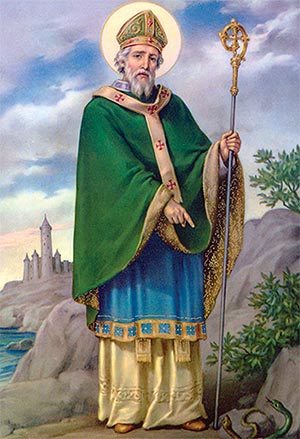History of St. Patrick's Day
St. Patrick's Day History
About the Saint :
 With St. Patrick's Day around the corner, it is worth taking a look at the
story behind the man called St. Patrick. His whole life is celebrated by so
many of us on 17th March each year throughout the British Isles and beyond.
Kidsgen is happy to bring you the interesting background of a great man
called St. Patrick, which you can go ahead and share with everyone you want.
All you have to do is click on the REFER THIS PAGE link at the end of the
page. Do send in your feedbacks if you think we have missed out something.
With St. Patrick's Day around the corner, it is worth taking a look at the
story behind the man called St. Patrick. His whole life is celebrated by so
many of us on 17th March each year throughout the British Isles and beyond.
Kidsgen is happy to bring you the interesting background of a great man
called St. Patrick, which you can go ahead and share with everyone you want.
All you have to do is click on the REFER THIS PAGE link at the end of the
page. Do send in your feedbacks if you think we have missed out something.
Have you ever wondered why, on St. Patrick's Day, everyone wears green to
avoid getting pinched or what has a four leaf clover, shamrocks, lucky
Leprechauns and kissing some odd old blarney stone means? So here goes the
answer...
The person who became the great St. Patrick, the patron saint of Ireland,
was born in Wales about AD 385. At the age of 16, he was sold into slavery
by a group of Irish marauders that raided his village. His given name was
Maewyn Succat. However, after he became a priest, he took on the name of
Patrick or Patricus.
Until he was 16 he considered himself a pagan and worked as a shepherd and
turned to religion for solace. After six long years of slavery he escaped to
the northern coast of Gaul where he studied in the monastery under St.
Germain, bishop of Auxerre for a period of twelve years. It was in Gaul
that, Maewyn became Patrick . During his training he began to realise that
his purpose was to convert the pagans of Ireland to Christianity. His wishes
were to return to Ireland to convert the native pagans to Christianity, but
his superiors instead appointed St. Palladius. But two years later St.
Palladius was transferred to Scotland, and Patrick, having adopted that
Christian name earlier, was then appointed as second bishop to Ireland.
Patrick was quite successful at winning converts, which led to clashes with
the Celtic Druids. He was also arrested several times, but escaped each
time. He traveled throughout Ireland, establishing monasteries across the
country. He also set up schools and churches which would aid him in his
conversion of the Irish country to Christianity.
St. Patrick's mission in Ireland lasted for thirty years. After that time,
Patrick retired to County Down. He died on March 17 in AD 461. That day has
been commemorated as St. Patrick's Day ever since.
IRISH FOLKLORE AND MYTHS ASSOCIATED WITH ST. PATRICK'S DAY
Saint Patrick's Day has come to be associated with everything Irish:
anything green and gold, shamrocks and luck. Most importantly, to those who
celebrate its intended meaning, St. Patrick's Day is a traditional day for
spiritual renewal and offering prayers for missionaries worldwide.
St. Patrick's Day is surrounded by quiet a few Irish folklores and myths.
However not much of it is actually substantially true according to
historians. Some of this lore includes the belief that
Patrick raised people from the dead.
He also is said to have given a sermon from a hilltop that drove all the
snakes from Ireland. Of course, no snakes were ever native to Ireland, and
some Christians claim that this is a metaphor for the conversion of the
pagans.
Though originally a Catholic holy day, St. Patrick's Day has evolved into
more of a secular holiday.
One traditional icon of the day is the shamrock. And this stems from a more
bona fide Irish tale that tells how Patrick used the three-leafed shamrock
to explain the Trinity. He used it in his sermons to represent how the
Father, the Son, and the Holy Spirit could all exist as separate elements of
the same entity. His followers adopted the custom of wearing a shamrock on
his feast day.

Christmas Images for WhatsApp
Christmas Wallpapers
New Year 2026
New Year Images for WhatsApp
New Year Greeting Cards
Horror stories
Moral Stories
Fairy Tales and Fables
Upanishads
Classic Stories
Betal Pachisi
Singhasan Battisi
Indian Mythology stories
School Projects
Quiz on Famous Footballers
Benefits of Yoga for Kids
Congratulations Cards and Messages
Try out the other sections
 Christmas
Christmas Thanksgiving
Thanksgiving Craft Ideas for Kids
Craft Ideas for Kids Benefits of Yoga for Kids
Benefits of Yoga for Kids School Projects & Homework Help
School Projects & Homework Help